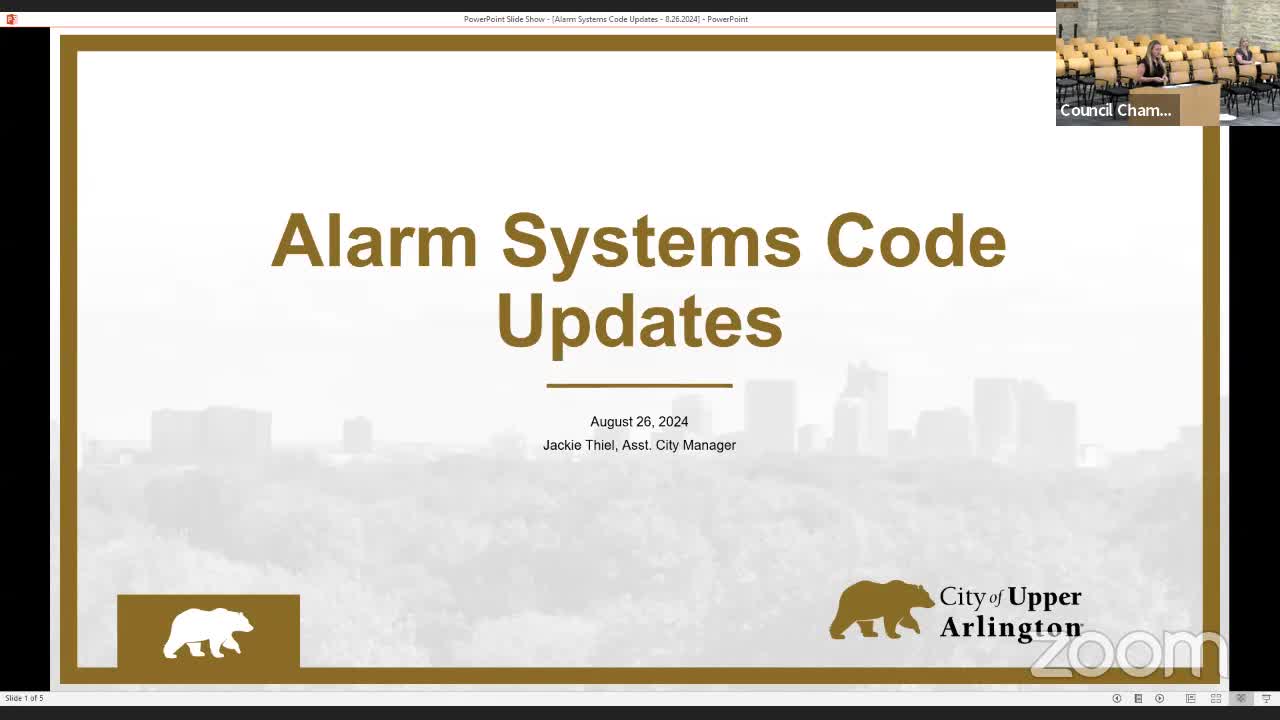City Implements New Software to Tackle False Alarm Crisis
August 26, 2024 | Upper Arlington, Franklin County, Ohio
This article was created by AI summarizing key points discussed. AI makes mistakes, so for full details and context, please refer to the video of the full meeting. Please report any errors so we can fix them. Report an error »

In a recent government meeting, officials discussed the implementation of a new software system aimed at improving false alarm management for police and fire services. Currently, tracking and reporting of false alarms are done manually, leading to inefficiencies and increased costs. The city has allocated $30,000 in the 2025 budget for this initiative, which is expected to streamline processes and enhance community outreach.
Laura Connelly from the police division spearheaded research into potential software solutions, resulting in a Request for Proposal (RFP) that attracted two bidders. The evaluation team, which included representatives from police, fire, and IT, recommended PMAM, a software provider, at an annual cost of $18,000. However, before finalizing the contract, the city must first update its code, which has not been revised since 2015.
The proposed changes include a new online alarm permit process, which will allow property owners to update their information easily and improve communication regarding false alarms. The city plans to waive the $50 registration fee for existing permit holders during this transition to encourage compliance and ensure accurate contact information.
The meeting highlighted the financial implications of false alarms, with fire services incurring approximately $175,000 in costs from 410 false alarms in 2021 and 2022, while police services faced $96,000 from a higher number of incidents. Officials estimate that even a modest 10% reduction in false alarms could save the city around $27,000 annually.
Council members expressed concerns about the costs associated with false alarms and the need for community education to prevent unnecessary emergency responses. The new software is expected to facilitate better outreach and education, helping to reduce the frequency of false alarms and improve overall efficiency in emergency services.
The city aims to implement the software by the fall, with a public education campaign to follow, ensuring residents understand the new processes and the importance of accurate alarm registrations. The effectiveness of the software will be evaluated after six months, with a focus on whether it leads to a significant reduction in false alarms.
Laura Connelly from the police division spearheaded research into potential software solutions, resulting in a Request for Proposal (RFP) that attracted two bidders. The evaluation team, which included representatives from police, fire, and IT, recommended PMAM, a software provider, at an annual cost of $18,000. However, before finalizing the contract, the city must first update its code, which has not been revised since 2015.
The proposed changes include a new online alarm permit process, which will allow property owners to update their information easily and improve communication regarding false alarms. The city plans to waive the $50 registration fee for existing permit holders during this transition to encourage compliance and ensure accurate contact information.
The meeting highlighted the financial implications of false alarms, with fire services incurring approximately $175,000 in costs from 410 false alarms in 2021 and 2022, while police services faced $96,000 from a higher number of incidents. Officials estimate that even a modest 10% reduction in false alarms could save the city around $27,000 annually.
Council members expressed concerns about the costs associated with false alarms and the need for community education to prevent unnecessary emergency responses. The new software is expected to facilitate better outreach and education, helping to reduce the frequency of false alarms and improve overall efficiency in emergency services.
The city aims to implement the software by the fall, with a public education campaign to follow, ensuring residents understand the new processes and the importance of accurate alarm registrations. The effectiveness of the software will be evaluated after six months, with a focus on whether it leads to a significant reduction in false alarms.
View full meeting
This article is based on a recent meeting—watch the full video and explore the complete transcript for deeper insights into the discussion.
View full meeting
